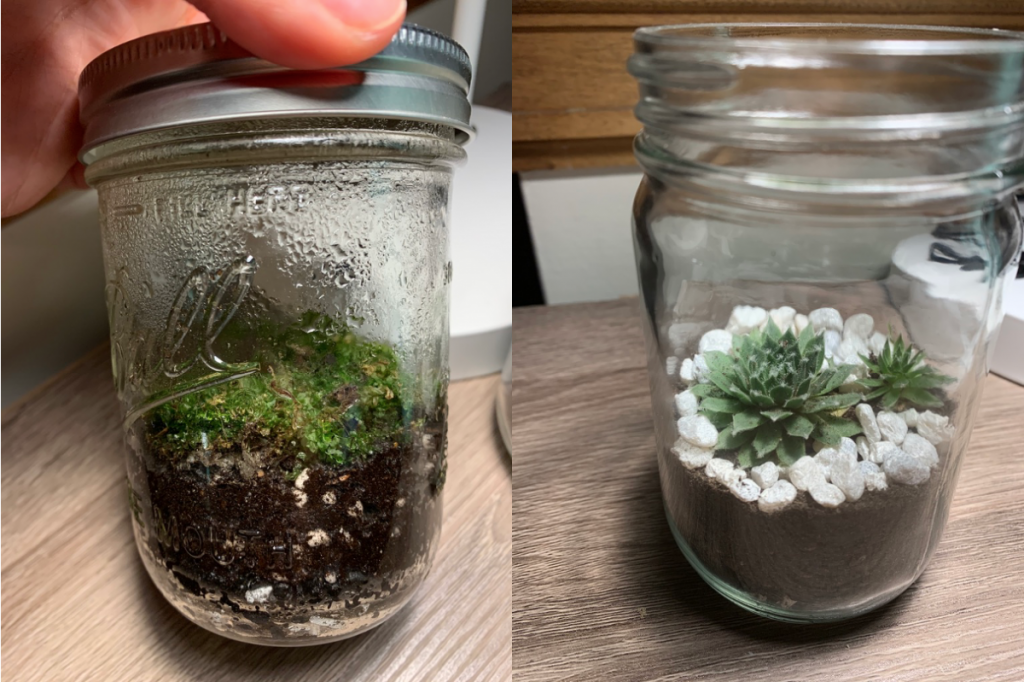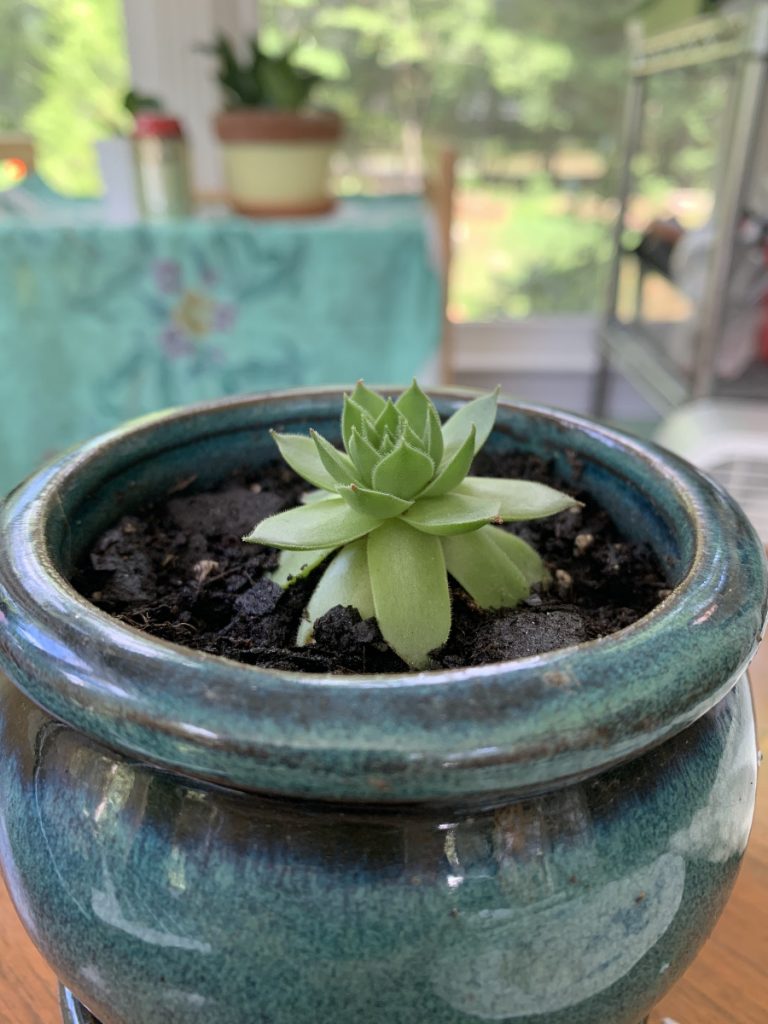Let’s plant that succulent!
- Fill your pot almost to the top
Add most of the succulent soil, leaving a little bit of room at the top. Make sure not to pack too tightly (to leave room for roots to grow).
- Position your succulent
Place your succulent on top of the soil, nestling its roots into the soil a bit.
- Top off the pot
Finish filling the pot with the remaining soil. To prevent rotting, the leaves of the succulent (if you have them) should be completely above the soil. You may be able to add a little more soil after the first watering too.
For more tips, check out How to Plant Succulents.
Keeping your succulent alive!
Succulents should be watered only when totally dried out. Water the soil until it is completely soaked, then wait until it’s totally dried before watering again. The amount of watering needed will depend on the succulent, but typically they should be watered at most once a week.
To find out more about watering, this beginner’s guide can be helpful: How to Water Succulents: Complete Beginner’s Guide
Propagate the leaves!!
- Cut your leaf
Using a sharp pair of scissors, cut a leaf from right above the stem.
- Leave your cutting alone for 1-3 days
Let your cut leaf scab over and dry out.
- Water your cutting
Once your leaf starts to shrivel, place it on top of some soil and water it anytime the soil dries out.
- Wait it out
After a few weeks of watering, your cutting should start to grow roots.
For more information on propagating, take a look at How to Propagate Succulents from Leaves and Cuttings!
Need Help?
We love hearing from you about how you liked the activity. Please send us pictures of your succulents in their new home or any questions you have. Does it have a name? If your succulent looks a little sad, shrively or dead, don’t worry! It’s super easy to nurse it back to health. Don’t give up, just be patient.


